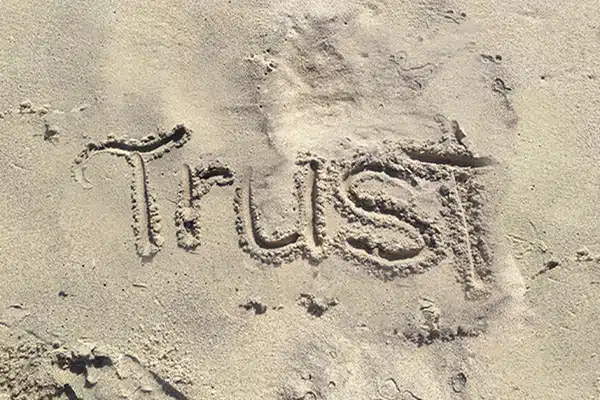S.T.O.P! How to become a more trusting school leader
Educational author Gavin Grift discusses the importance of assuming positive intent.
In our book Five Ways of Being, we explore the different strategies that leaders can use to cultivate five important mindsets. These mindsets are to be: trusting, brave, storyteller, purposeful, and growth-focused.
When we recently polled 130 middle school leaders on their most pressing challenge, the most common response was a lack of time. The second major challenge? Being able to trust those they work with.
We know that the first job of a leader is to inspire trust – to bring out the best in people by entrusting them with meaningful stewardships. Yet in reality, it’s often an almighty challenge.
Why trust is essential in a PLC
Creating an environment with high levels of trust inspires creativity and possibility, which is needed for us all to act as problem solvers in any professional learning community (PLC).
This creates a ‘what if’ climate, where all staff feels comfortable in creating and exploring different possibilities, committing to them, and monitoring their impact.
Leaders also have to trust enough to delegate responsibility – and to believe those they’re delegating to either have the capacity or can grow into the skills required.
Bringing your whole self to school
By bringing our whole selves to school, we’re also helping to create an environment of openness and trust.
It doesn’t mean we shouldn’t be professional or drag all our personal problems into work. But it does mean we should let our colleagues know who we really are and make genuine efforts to get to know them!
A simple strategy
In Five Ways of Being, we offer up 32 strategies that can help busy educators. Today, I want to focus on one strategy, ‘STOP’, which can help build more trusting relationships with your colleagues. This strategy developed by *Andy Buck (2018) is effective in ensuring we come from a place of assuming positive intent.
Use each letter of STOP to remain mindful during your interactions.
1. S: SEEK to understand the situation
Ask yourself: what’s going on? What are your emotions and thoughts about this situation? How are you going to react?
This requires you to be mindful, rather than reacting in an ill-considered way that could end up worsening the situation.
2. T: Recognise your THOUGHTS
Be honest with yourself: what actions are you thinking about taking right now?
Are you going to dash off that terse email, or join in that gossip session – which could potentially erode a whole lot of trust?
Think carefully before you engage in behavior that’s potentially untrustworthy, and pause before the next step.
3. O: Consider your OPTIONS
What are the other alternatives, rather than just your initial response?
Perhaps, for example, you could write that abrupt email, but save it to your ‘draft’ folder and come back to it tomorrow.
4. P: Make a PLAN
The final step is making a plan. When formulating it, be sure the options you have chosen align with your values, goals and leadership position – and the school’s.
You don’t always have to be right
Remember, what’s most important is not necessarily being right all the time.
Rather, it’s doing the right thing as a leader and remaining mindful so that you can trust both yourself and build trust in others too.
*Buck, A. (2018). Leadership matters 3.0: How leaders at all levels can create great schools.
John Catt Educational Limited.




